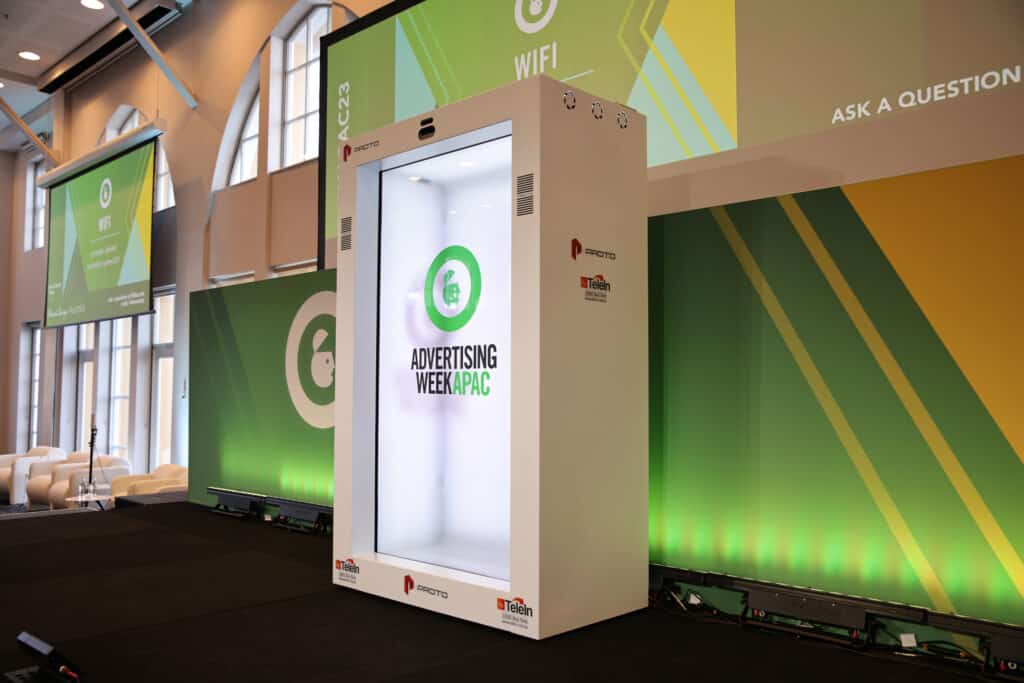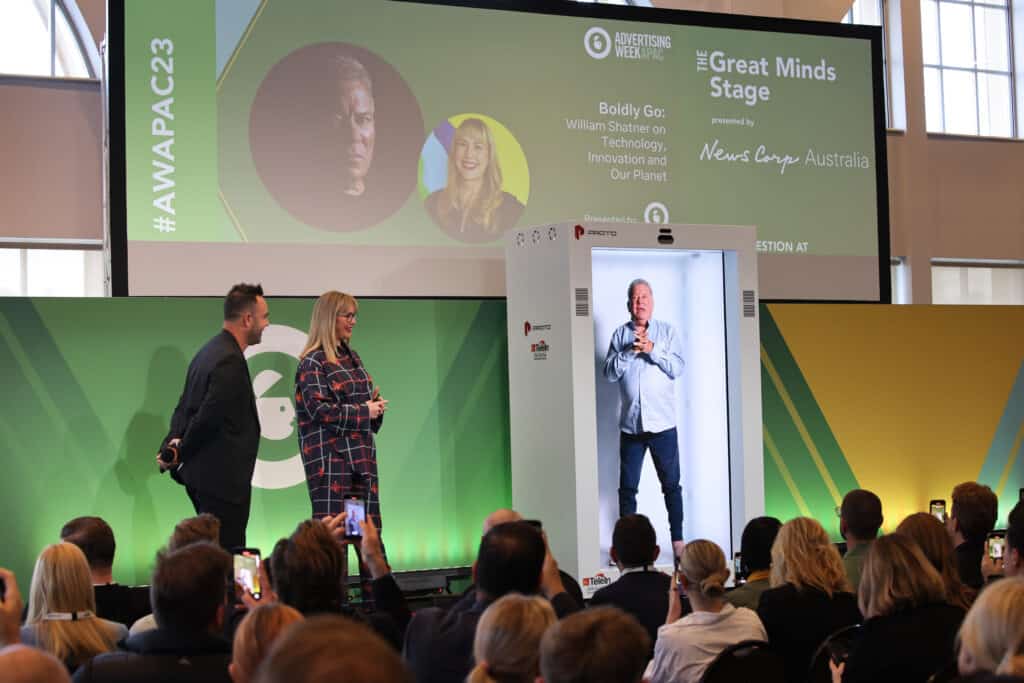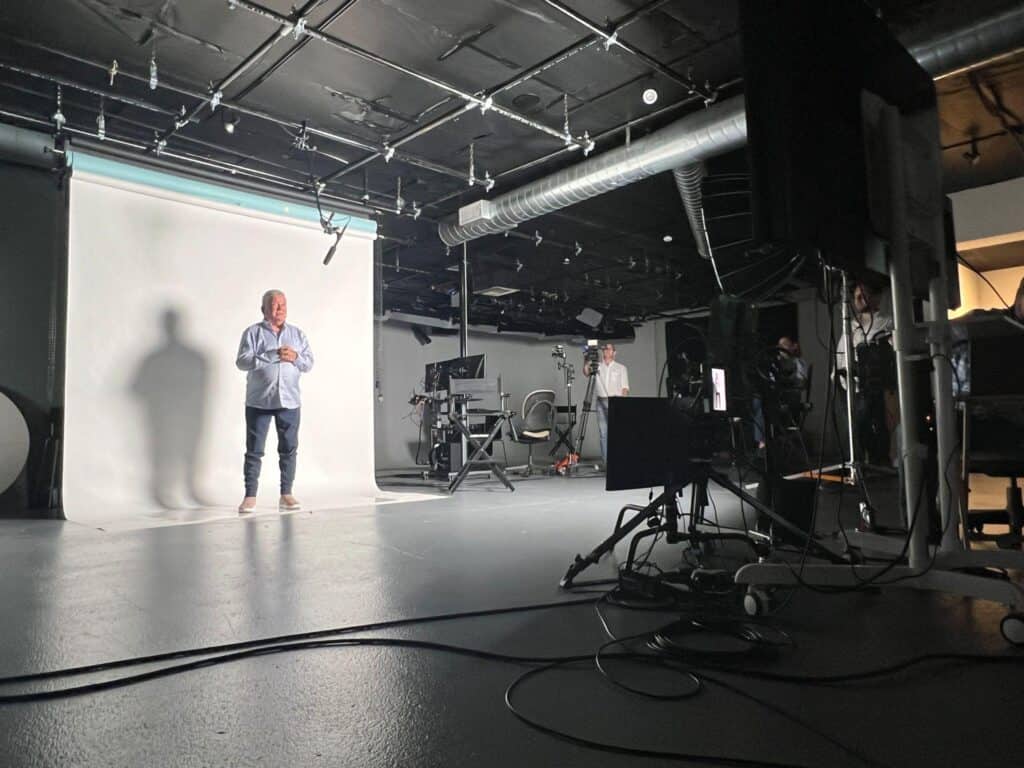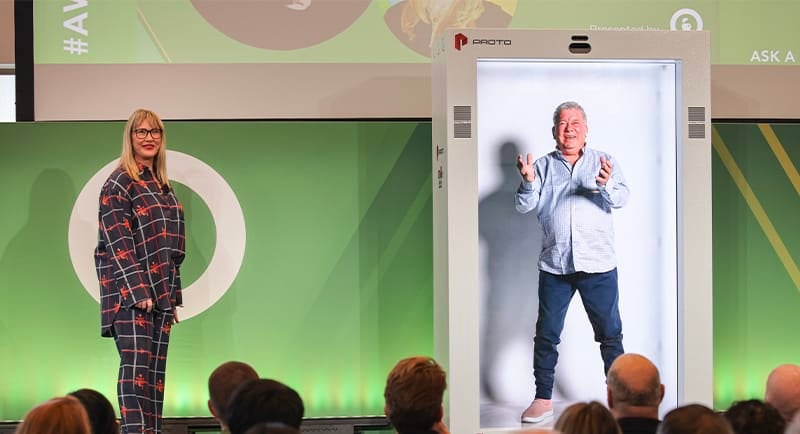By Cat Bowe, Meta
Is he still alive? A question I got more than once prior to my interview with William Shatner. I am old enough to remember the Tupac hologram at Coachella in 2012, where they brought him back from the dead for one last performance so I probably shouldn’t have been so taken aback by the query. But this was different. This was better.

Credit: Shutterstock and Advertising Week APAC
In a scene that could have come straight out of a sci-fi movie, the legendary William Shatner, beamed into Advertising Week APAC to have a conversation with me in real time. No recordings. No resurrecting people from the grave. We showcased the future of communication technology with Los Angeles-based company Proto Hologram, which has developed what they call “the world’s first and only holographic communications platform.” This groundbreaking technology enables individuals to address audiences from anywhere in the world, transcending the limitations of traditional video conferencing software. Shatner’s hologram was beamed into Advertising Week APAC in Sydney, leaving the audience in awe.

Credit: Shutterstock and Advertising Week APAC
The hologram experience is a captivating and immersive one, characterised by several key aspects that set it apart from conventional communication methods.
• Realism: Proto’s advanced holographic technology creates incredibly lifelike representations of individuals, objects, or scenes. The high-definition 3D visuals provide a sense of tangibility and presence, making it feel as if the hologram is physically in the same room.
• Interaction: Unlike static video feeds, hologram systems allow for real-time interaction with virtual content. Users can manipulate holographic objects and navigate through virtual environments, fostering engagement and collaboration.
• Immersion: The perception of depth and dimensionality in holograms makes the experience feel natural and immersive. This spatial awareness enhances the feeling of being physically present in the virtual space, transcending the limitations of traditional 2D displays.
• Spatial Sound: Integrated spatial sound technology complements the visuals, providing audio cues that align with the position of virtual objects. This feature adds an extra layer of realism to the experience, making it dynamic and life-like.
• Telepresence: One of the most significant advantages of holographic communication is its ability to facilitate telepresence. Remote participants can interact as if they were physically present in the same location, promoting seamless communication and collaboration across distances.

Credit: Shutterstock and Advertising Week APAC
I’ve been asked how I prepped. The answer: Bill and I spoke a lot. I read his books, watched his recent documentary (released at SXSW earlier in 2023) and I asked a thousand questions about the tech. What could he see? The answer: he could see the audience, he could see me on stage, and he could see a mirror of himself all in a studio in LA), was there a lag? Yes, about 1 second. What could I see? The side of the box, and him on the screen comforter. Would I need to stand the whole time? Who would care? Will this work?
While holographic communication holds immense promise, it is not without its challenges and limitations. High-quality holograms require sophisticated hardware and infrastructure, which can make the technology relatively expensive.
Proto’s demonstration in Sydney encountered a minor technical difficulty with a brief disconnection of audio. However, despite this glitch, the overall experience was overwhelmingly positive and impactful. I am enthusiastic about technology. The high definition visuals and crisp audio made it feel as if Shatner was physically in the room, and his passionate call for responsible action resonated with the audience.
The successful demonstration of Proto’s holographic communication platform hints at a future where physical barriers no longer limit our ability to connect and collaborate. Imagine a world where business meetings, educational lectures, and entertainment events feature holographic speakers and performers addressing global audiences from the comfort of their studios.

The view from LA. Credit: David Nussbaum at Proto
The potential applications of this technology are vast. Beyond business and entertainment, holographic communication could revolutionise fields such as education, medicine, and emergency response. Doctors could virtually consult with patients worldwide, educators could conduct immersive virtual classes, and first responders could collaborate seamlessly during crises.
Holograms represent a significant leap forward in the evolution of human interaction. The demonstration with William Shatner showcased the technology’s immense potential, even with a minor technical snag. As advancements continue, holographic communication could become an indispensable tool for global connectivity and collaboration, transcending geographical boundaries and redefining how we engage with one another in the modern world. While the technology is still in its early stages, the vision of a truly interconnected global community is no longer confined to the realms of science fiction. The future of communication is, quite literally, beaming.
–
Top Image: Catherine Bowe interviews William Shatner via hologram. Credit: Shutterstock and Advertising Week APAC
